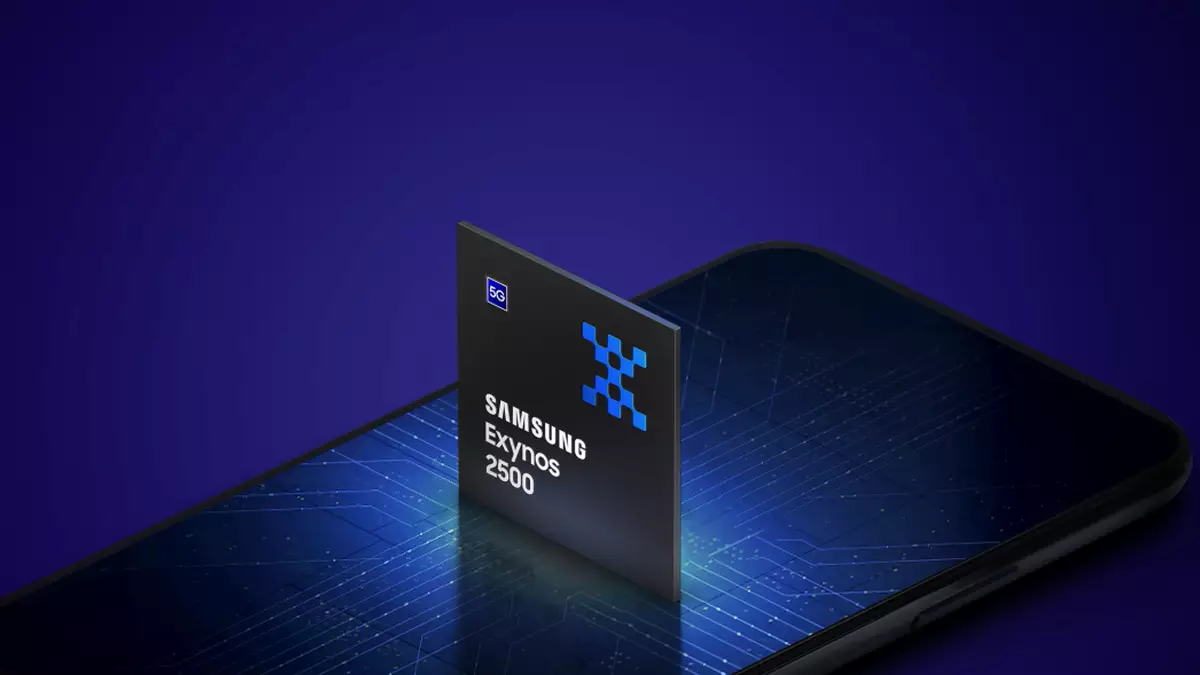The unveiling of Samsung’s Exynos 2500 processor marks a significant milestone in the world of mobile technology, particularly because it is the company’s first chipset produced using the much-lauded yet often mysterious 3nm process technology. On paper, the Exynos 2500 boasts impressive statistics, including a claimed 15 percent increase in CPU performance and a staggering 39 percent boost in on-device artificial intelligence capabilities over its predecessor, the Exynos 2400. While these numbers sound enticing, they beg the question: are consumers truly going to feel this perceived leap in performance, or is it merely a marketing gimmick cloaked in impressive jargon?
Pushing the Envelope with Connectivity
One of the most noteworthy features of the Exynos 2500 is its direct connectivity to Low Earth Orbit (LEO) satellites for emergency communications. This ambitious innovation could serve as a game-changer, especially in scenarios where conventional cellular service is unavailable. However, one must consider the implications of reliance on satellite communication. The reality is that emergency uses, while noble, may not render the same level of appeal for everyday consumers. Still, the mere inclusion of this feature suggests a future where connectivity is not constrained by traditional means, indicating Samsung’s intention to remain at the forefront of technological advancements.
Nevertheless, this focus on high-tech solutions can sometimes overshadow essential incremental improvements that users actually care about. Will your average user find comfort in knowing their device can connect to satellites, or would they prefer enhanced battery life and everyday usability? These trends seem to prioritize the glitz over the grind of daily user experience.
The Design and Efficiency Dilemma
Samsung has employed its tri-cluster CPU design in the Exynos 2500, which comprises a combination of high-performance and efficiency cores. This structure intends to balance power consumption with performance—a tantalizing concept. However, there’s skepticism surrounding whether this complex architecture will truly offer significant enhancements in day-to-day use. The 10-core structure might suggest a supercharged processing capability, but the actual gains consumers will experience while multitasking or running applications remain to be seen.
Moreover, Samsung’s claims that these chips utilize advanced heat dissipation techniques through fan-out wafer-level packaging (FOWLP) and that this improves energy efficiency could either translate into spectacular performance or nimble marketing phrases lost in translation. Often, manufacturers overpromise only to fall short when users scrutinize actual performance in real-world scenarios.
Gaming and Artificial Intelligence: Are We Ready?
The inclusion of the Xclipse 950 GPU, built on AMD’s RDNA 3 architecture, enhances the gaming experience by promising a competitive edge in frame rates, particularly for graphically demanding applications that leverage hardware-accelerated ray tracing. While gamers dream of buttery-smooth graphics and immersive experiences, it remains to be seen if the average Samsung customer prioritizes gaming performance to such an extent.
Furthermore, advancements in on-device AI capabilities sound promising on paper, with Samsung claiming a potential 39 percent performance improvement. Still, it’s essential to evaluate the actual applications of these features. The meaningful implementation of AI in everyday tasks is often exaggerated, and it raises concerns over user perception: is it really revolutionary, or just another feature to boost product appeal?
A Camera System to Break Boundaries?
The specifications are equally bold concerning camera capabilities, purportedly supporting up to a jaw-dropping 320-megapixel sensor alongside the capability for recording in 8K at 30fps. Yet again, expectations must be tempered by the realities of mobile photography; how many users will truly utilize these high specifications effectively? Real-world usage tends to reveal a stark divide between promise and practicality, as professionals with discerning tastes in photography still prefer dedicated equipment.
Samsung’s advancements undoubtedly cater to the upper echelons of tech enthusiasts, yet it’s crucial to recognize that the average consumer may never take a photo linking their smartphone’s capabilities to the image quality of a professional-grade camera.
While the Exynos 2500 evokes excitement with its array of high-tech innovations, the realization of its potential ultimately rests on the shoulders of user experience. The success of this ambitious chipset will reveal itself only in its practical applications and real-world performance.


Leave a Reply